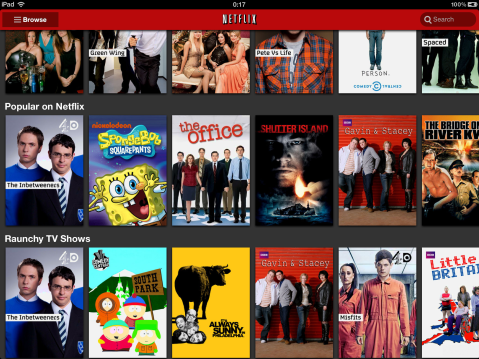Just K.I.S.S. or Reinvent the Wheel?
With all the books published in the wake of Steve Jobs’ death promising to give you that extra piece of insider info that nobody knows, and the non-stop almost mythical desire to figure out what makes Apple tick. May this writing serve as push back to what appears to have become an industry of onlookers and talking heads who seem to have made a product out of rearranging the puzzle pieces that they promise, when assembled correctly, deliver the secrets of Apple. I am guilty of indulging in this industry, and I confess to have bought the books, read the blogs and watched the videos. The majority of the knowledge I have acquired may eventually prove useful if an Apple centric version of Trivial Pursuit is ever made, however the minority of that knowledge is surprisingly tame when vocalized. You see, the allure of the secret is what destroys good thinking in Design. Again, guilty as charged in this respect, I might speculate that this somehow ingrained in me from some resounding childhood experience. The image of the lone individual who pours over mountains of research to find the ultimate answer and be crowned a hero. What stops me from thinking that I am sole victim of this affliction, is my observation of this happening to other people as well. The thought that the answer to a question is free, public, and visible to all, somehow annoys us.
Let me explain by laying out how I think it plays out in our heads:
We pay for our education, our desirable degrees in X and Y, and we feel good because we obtained access to the special club. The club where the answers are, right? So we are relieved by this comfort, and rightly so! We earned, fought and worked ourselves to near death for it. We then take the degree we received from our special club and get a job where this degree is valued and appreciated. Upon arrival at the job, we are presented with the first challenge.
We think to ourselves “Oh man! This challenge calls for a special solution! I have just the perfect tools (that I learnt in my special club) that I am going to use to overcome this challenge”.
This is the first step where it all goes crazy: We love the fact that we have special tools from our special club. We love that we can make ourselves appear valuable by the mere notion that we have a secret toolset that we borough through to find the save-the-day tool. One might think, of course its like this! don’t doctors have a toolset they learnt that literally does save the day? Yes, and it works and everyone goes home happy, but thats the difference between an ok doctor and a great Doctor. A great doctor strives to eliminate the tools so he/she can focus on the patient. A great doctor uses tools not because he has them but because they work for that situation.
However obvious this point may sound, consider the sheer amount of temptation posed by routine when one is looking to solve a problem. We do this constantly, as professionals and just people, to establish methods of efficiency that shorten the amount of time needed to reach the goal. What is sometimes unquestionably thought of as being inherently good; efficiency, one can just as easily see as a short-cut. It’s difficult to ask “why?”, to truly question one’s own fundamentals. Herein is the problem posed by the toolkit. It quickly becomes the place where we think the solutions are.
I’m reminded of the stories some Architect friends would tell me, about the challenges posed by creating a facade that would match the style of the buildings’ internal structure. At the time, these friends were putting together a project proposal and I didn’t think much of it. More recently, I came across an article on the inspiration behind the Beijing Olympic Stadium (Birds Nest) and the Architects made note of how it was a “pure structure”, where the “facade and the structure are identical”. As a non-architect, it seems insanely obvious, but as a friend, looking back on the anecdotal story told by the Architect friends, I can see what had happened: The toolkit failed.
Allow me to make some quick housekeeping work on the overall argument here (just so we are all on the same page):
1. I like research, I think one must be thorough and do ‘the homework’
2. I think the pursuit of education is the best thing one can do
3. Toolkits = Principles = Guidelines = Rules = Assumptions = Complexity
At this point, some might say that the toolkit is there to serve as a starting point. A square 1 in a project where square 1000 seems distant and unachievable. While I accept that every Designer needs a safe haven to resort to just in case of emergency, I would caution against placing this toolkit at square 1 by default. Just like every tool has its limitations, the entire toolkit carries its own limitations and as a result, a good Designer should always question whether they are using their tool out of habit or out of applicability.
This point even applies to such broad tools like the kind given by Apple to it’s developers in the form of Interface Design Guidelines. Apple does this for a variety of obvious reasons and developers use them for obvious reasons. What is not obvious, are the reasons developers decide to eschew those guidelines in favor of their own approach. In fact, whats even more interesting and not obvious is why Apple decide to eschew their guidelines from time to time in their own Apps. Let’s deal with first instance. (The second i’ll save for another day)
Netflix offers a universal (iPad & iPhone) version of their app. Those who are familiar with what Netflix is and does, are aware that they (in this instance) are a video streaming service that customer pay a monthly subscription for to access a large library of TV and Movie content. Even to the layman, the intent of their app is clear and the expectation of what the App will do is dead simple.
So the question arises, why did Netflix decide to completely ignore Apple’s approach to video content delivery and go about trying to reinvent the wheel? Everyone can see the temptation to follow Apple’s footsteps and borrow the iTunes Movie store approach. They don’t though. Why? Because Netflix wants you to browse their content not search for it. They know that they have some serious holes in their library and if you go to Netflix with the intent of searching for a specific title, there is a high chance that you will be disappointed. Netflix = browse, not search. Keeping this in mind, consider why other elements are non-standard on Netflix’s interface are non-standard. The “Browse” genre picker and the tap feedback also ignore the interface guidelines.
To speculate about the intent behind these decisions is frankly a waste of time, but the overarching point comes through when one tries to imagine how a Designer goes about choosing to just keep-it-simple-stupid and follow precedent or, to reinvent the wheel.
As a Designer, you constantly feel like the past has something to offer on how to move forward. The counterpart to that feeling is the push to totally re-imagine something. I’m not the first to suggest that the Virtue may be in the middle somewhere, nor am I the first to suggest that talent is deciding when to go with which. I will posit though, that the fancy toolkit one picks up at the club helps with neither.

